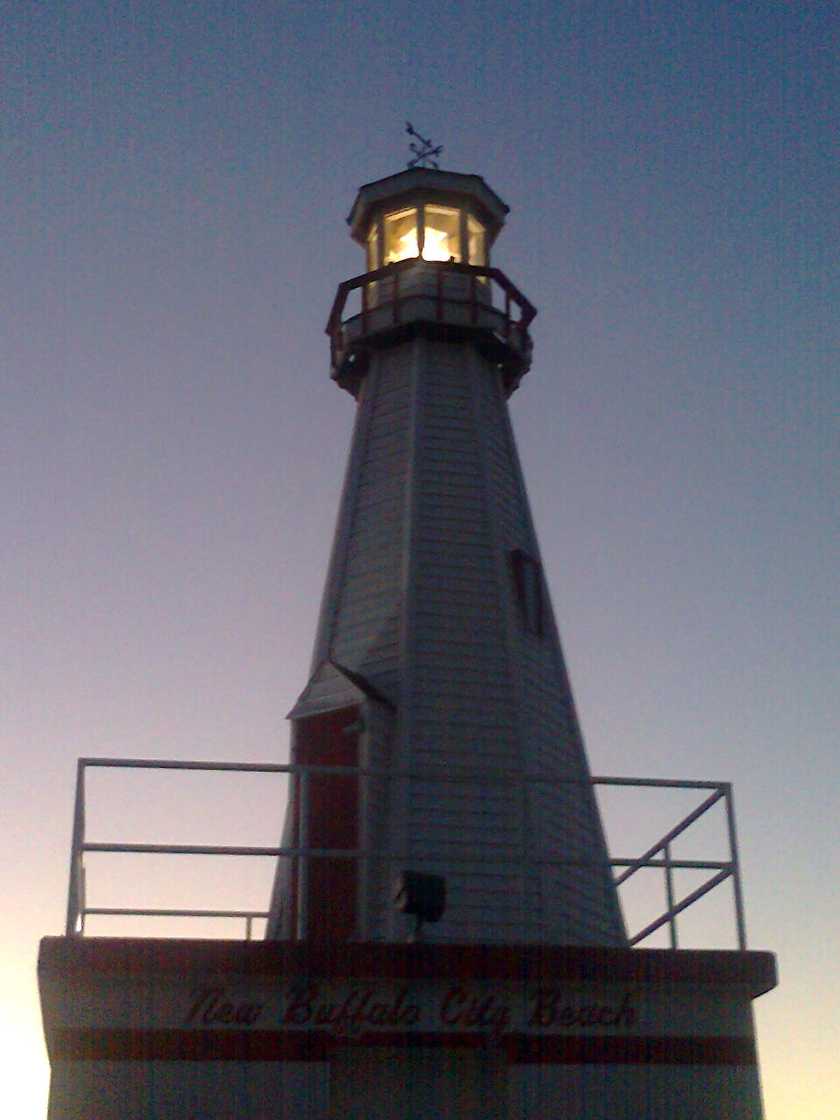 Rock and Roll Hall of Fame, Cleveland, Ohio, 2016
Rock and Roll Hall of Fame, Cleveland, Ohio, 2016
The Rock n Roll Hall of Fame Museum has got to be one of the most exciting, dynamic places on the shores of the Great Lakes: six levels and nearly one hundred years of the music that was, is, and will be part of the greatest art form on Planet Earth. The Glass Tent, as it’s called, was designed by I.M. Pei. In the immortal words of The Who from their 1979 single: "Long Live Rock."
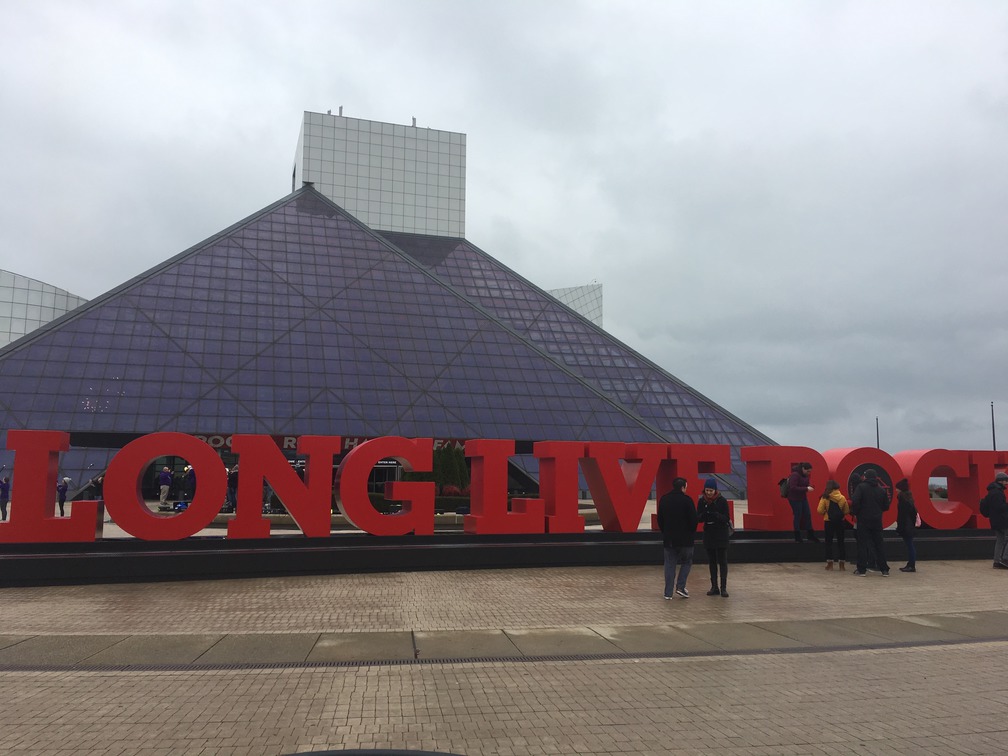
The Rock & Roll Hall of Fame Foundation began its long strange trip to
create a physical structure to house all of its wonderfulness back in 1985.
The Rock Hall became a reality on September 2, 1995, in Cleveland, Ohio, on
the southern shore of Lake Erie. There were 500,000 visitors to the Rock
Hall in 2015. These images you are about to view were taken on Friday,
November 25, 2016—the day after Thanksgiving.

This is where tickets for the Rock Hall can be purchased. The tickets are
then turned in for wristbands. The editor of this blog purchased her four
adult tickets online in September for $96. She discovered that she left her
receipt at home upon arriving at the will-call window, but the clerk looked
her up and gave her the four paper tickets she bought.
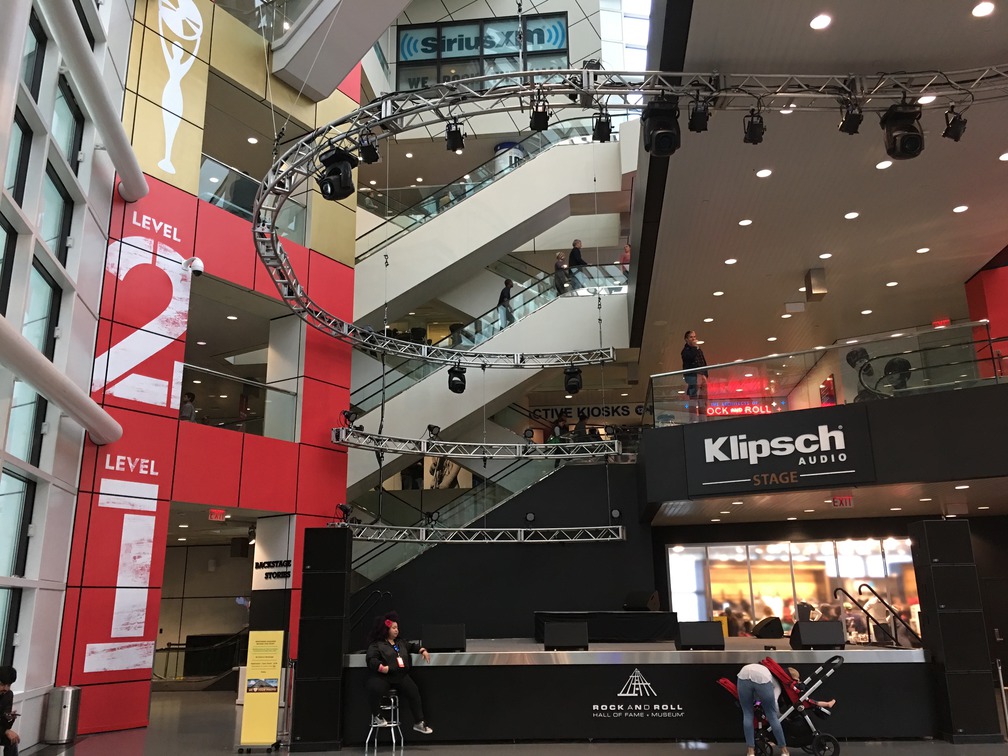
This is the view of the Rock Hall right after picking up tickets at either
the ticket desk or the will-call window. The Cafe and the Hall of Fame
inductees red carpet area are both on the third floor. But there’s fun stuff
downstairs, too, which is where we went first . . . to put all of our coats
in a box at the coat check room, which was really convenient.
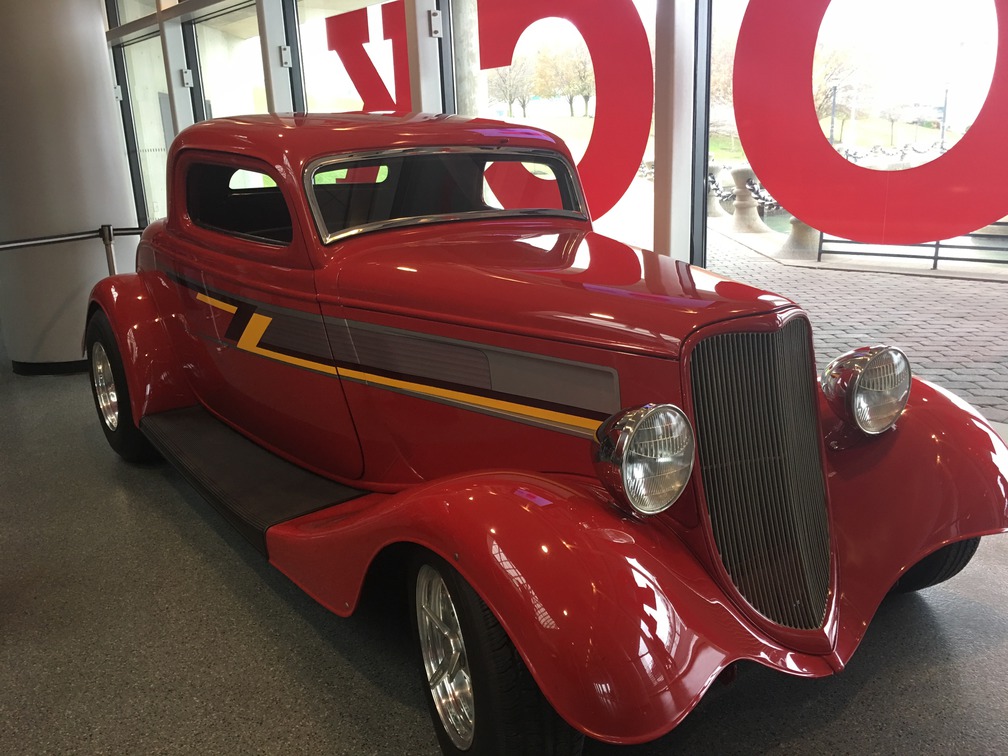
There is some fun stuff at the Rock Hall that you don’t need a
ticket/wristband for. The Cafe, the Gift Shop, and part of the downstairs is
open. This cool display of the ZZ Top “Eliminator” hot rod is downstairs,
complete with video display. This 1933 Ford is parked right next to the Rock
Hall’s CBGB’s OMFUG iconic awning display from New York City. (It means:
Country, BlueGrass, Blues and Other Music for Uplifting Gormandizers.
Gormandizer in this case is a consumer of music.)
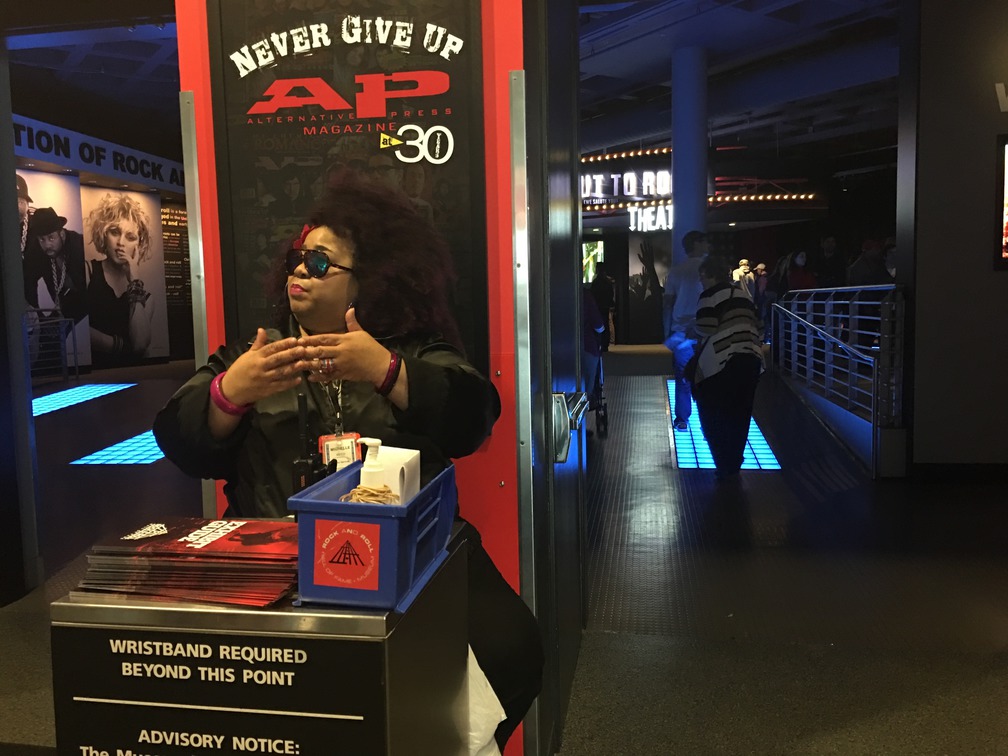
This is an example of the wristband areas at the Rock Hall. (There are
bathrooms/drinking fountains down here, just like on every floor.) This is
the lower level featuring the roots of rock and roll. Rock n Roll is a slang
term for sexual intercourse. For what it’s worth, Robert Johnson (1911-1938,
Mississippi) is the first singer/musician you’ll see when walking into this
exhibit. He’s also the first Rock Hall inductee.
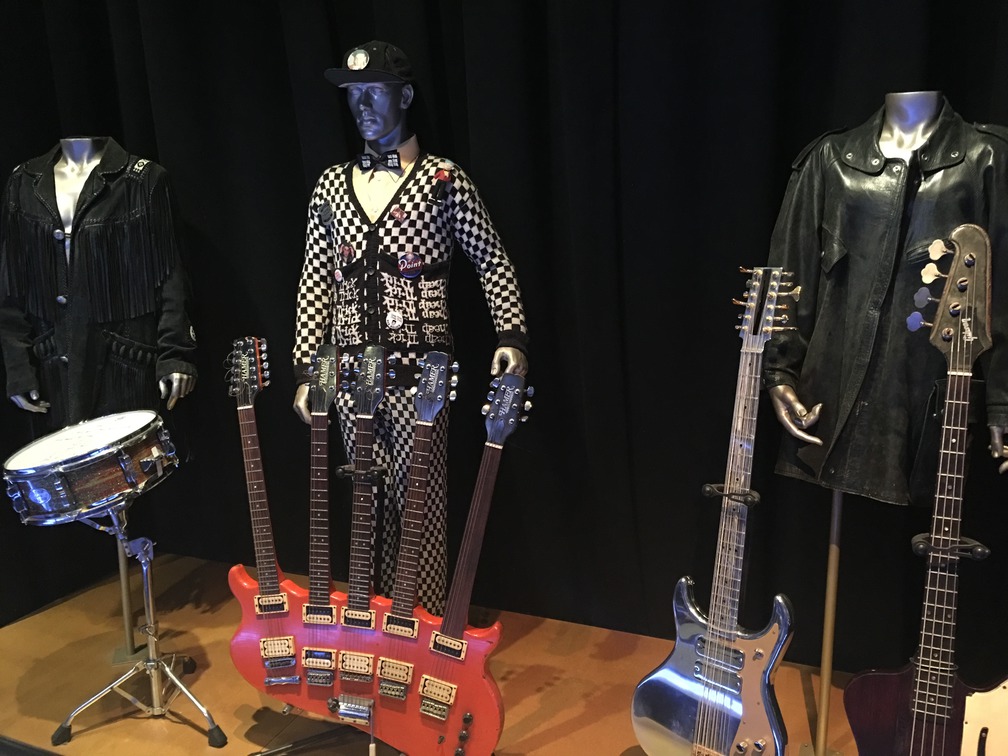
This is the Cheap Trick exhibit in the lower level of the Rock Hall. Cheap
Trick was inducted into the Rock Hall this past April, and lead guitarist
Rick Nielsen’s five-necked Hamer guitar is pictured here. In 1973, the band
was formed, and in 1974, the classic line-up was complete with singer Robin
Zander joining with Bun E. Carlos on drums and Tom Petersson on bass guitar.
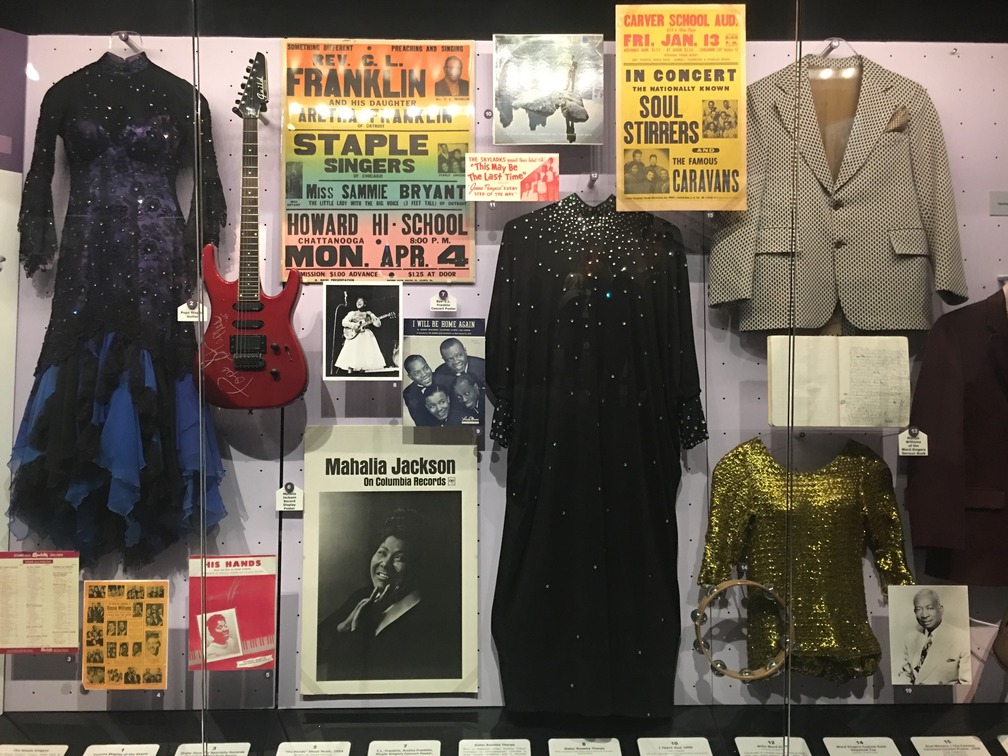
Rock music is older than you think it is. Mahalia Jackson (1911-1972, New
Orleans) was born into a devout Christian family and began singing gospel in
her church at age 4. She liked secular music, and went to Chicago to study
nursing, but starting performing gospel music there. She sang at MLK Jr.’s
March on Washington in 1963, and the rest of the connections between Gospel
and Rock are history.
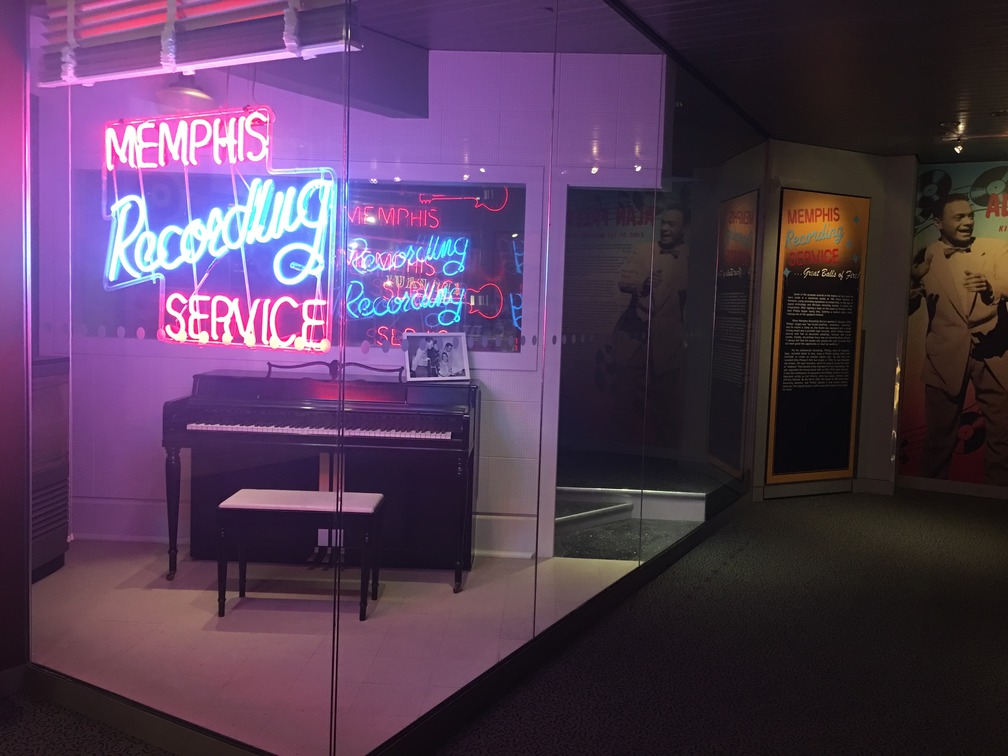
The roots of rock wind through this Memphis exhibit. There are also a lot of
vintage guitars here, plus the stories behind them. Having been to Beale
Street in Memphis, I can definitely agree, as I am a proud owner of a Sun
Studio t-shirt. Elvis Presley’s Graceland mansion is part of this heritage,
and B.B. King also lit it up here. Music has been a Beale Street
fixture since the 1860’s.
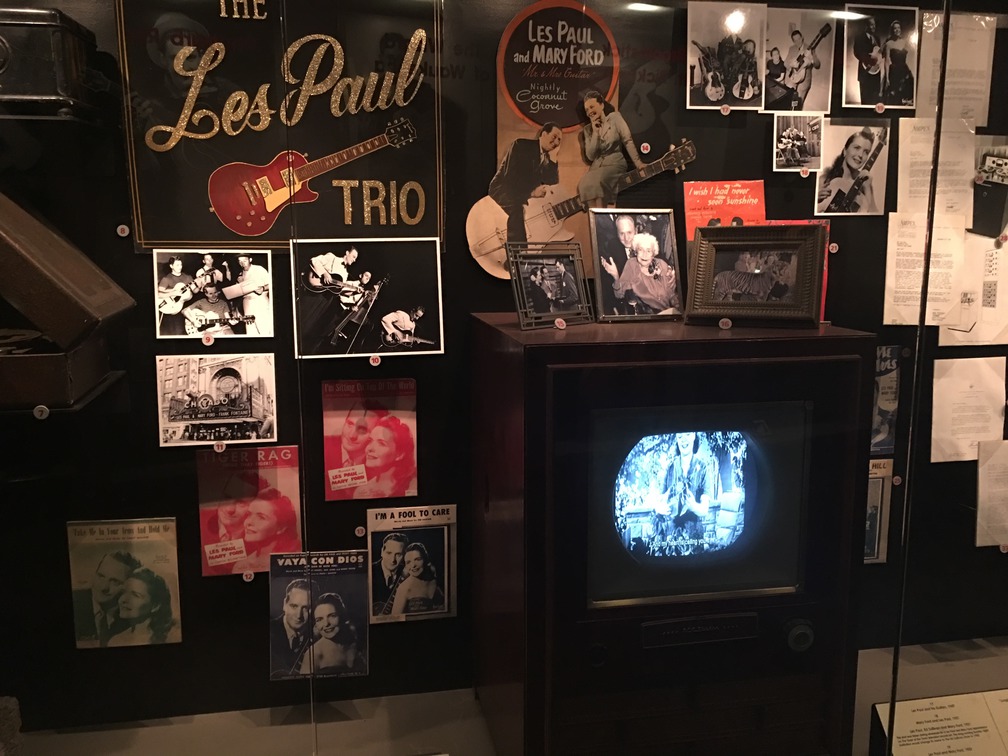
Social change can explain some of the “why" rock music happened, but this
exhibit explains “how" rock music happened. More specifically how the
electric guitar was created—the very symbol of rock n roll. Guitarist Les
Paul (1915-2009, Waukesha), as a youth, cobbled together parts from his
parents’ radios and phonograph to create this new invention. He and his wife
and musical partner, the guitarist Mary Ford (1924-1977, California),
recorded a guitar duel in 1954 in Hollywood (view on GuitarPlayer.com).
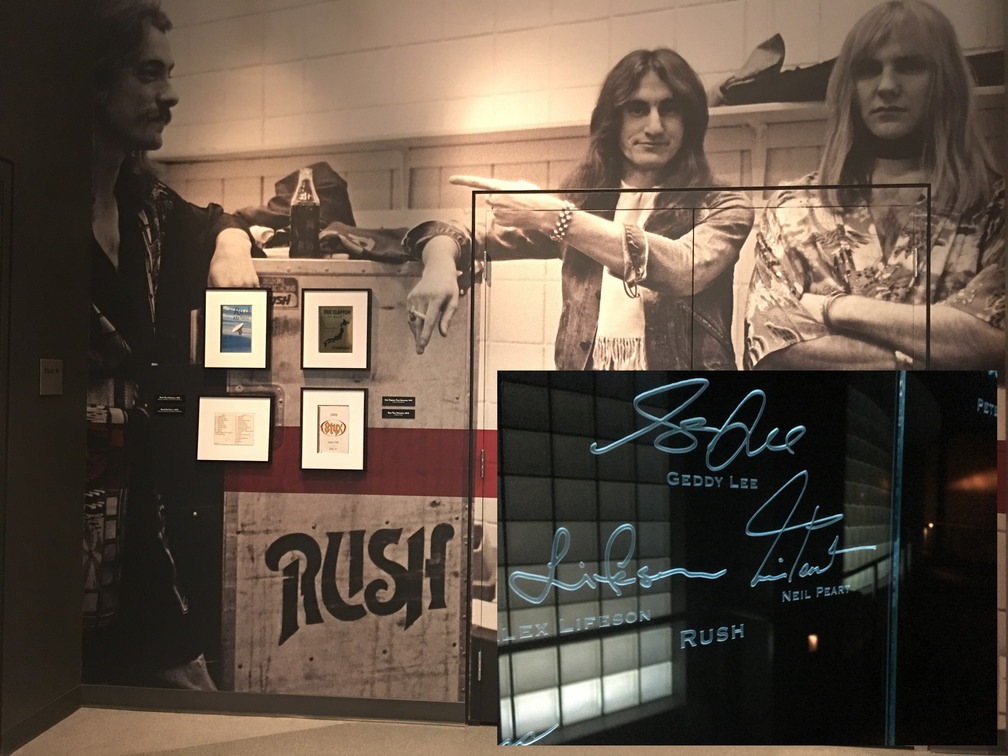
Before too long, the Les Paul style Gibson guitar was everywhere . . .
including in the hands of Alex Lifeson of Toronto’s power trio Rush.
Together with singer-bassist Geddy Lee (middle) and lyricist-drummer Neil
Peart (left), they defined progressive rock from the 1970’s through today.
This group was inducted into the hall of fame in April 2013. This inset is
an image from their induction.
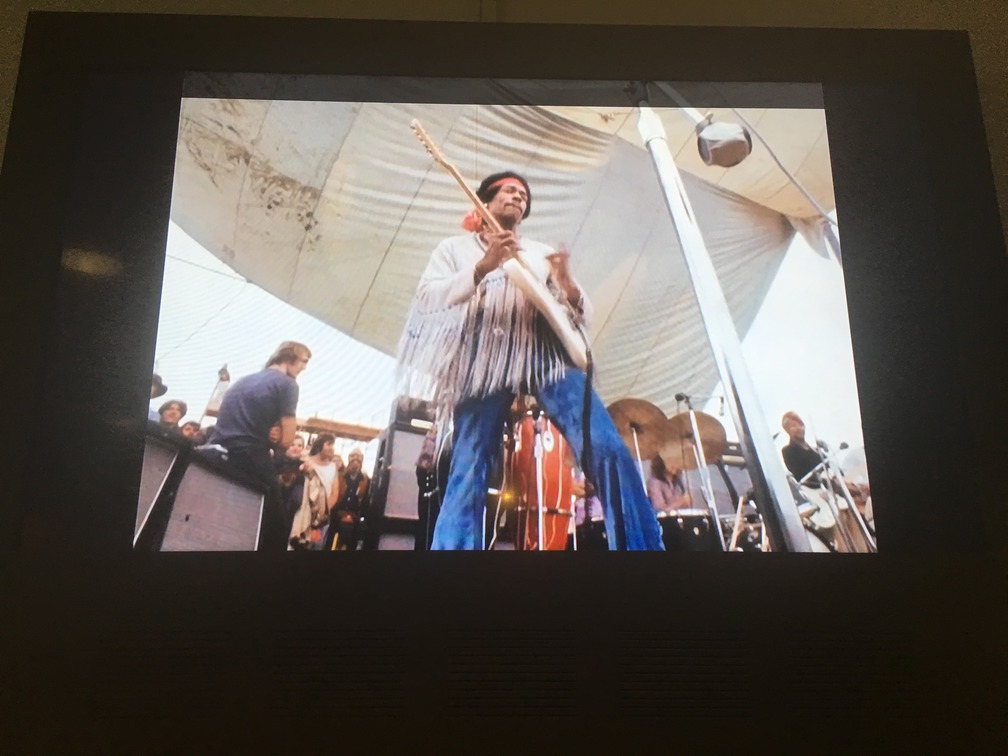
Jimi Hendrix was not playing a Gibson Les Paul in this image . . . it is a
white 1968 Fender Stratocaster. As captured in this image at the Rock Hall,
Jimi Hendrix (1942-1970, Seattle) rendered his immortal version of the
Star-Spangled Banner at the Woodstock Festival on August 18, 1969. He
stepped onstage at 9 am as the closing act, played a two-hour set, and made
history.
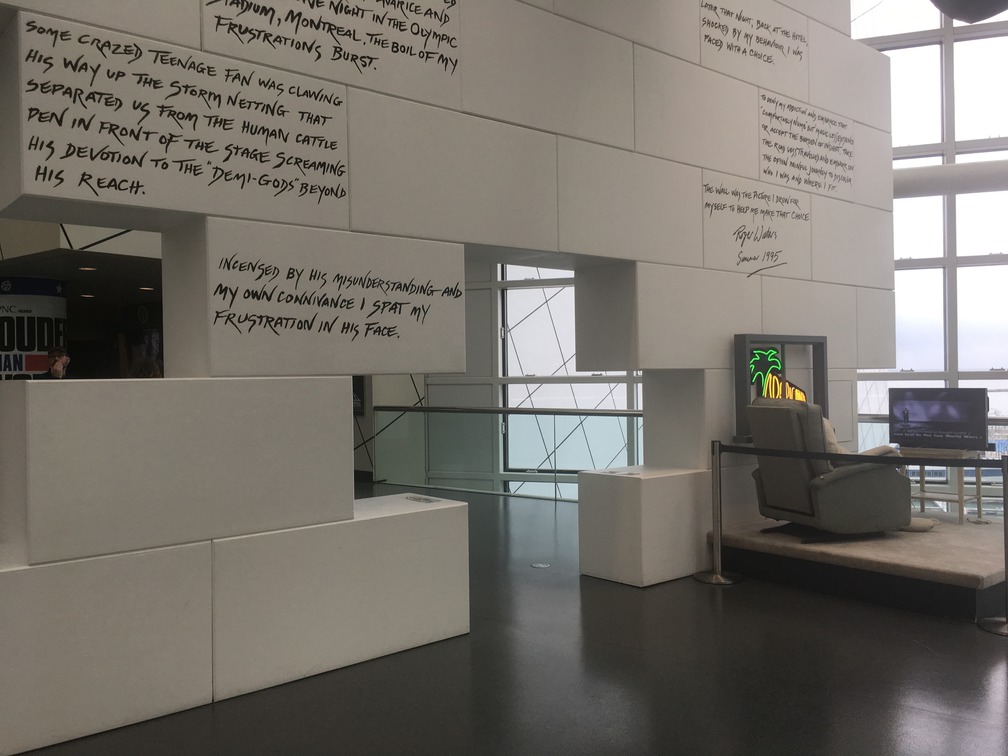
This immersive Pink Floyd “The Wall” exhibit is located on the third floor
right next to the Cafe. I chose this oblique image of this exhibit for a
reason . . . so the Rock Hall visitor could walk in on the motel-room TV
viewer at his or her own pace and view it as he or she sees fit. Pink Floyd
was inducted into the Hall of Fame in 1996.
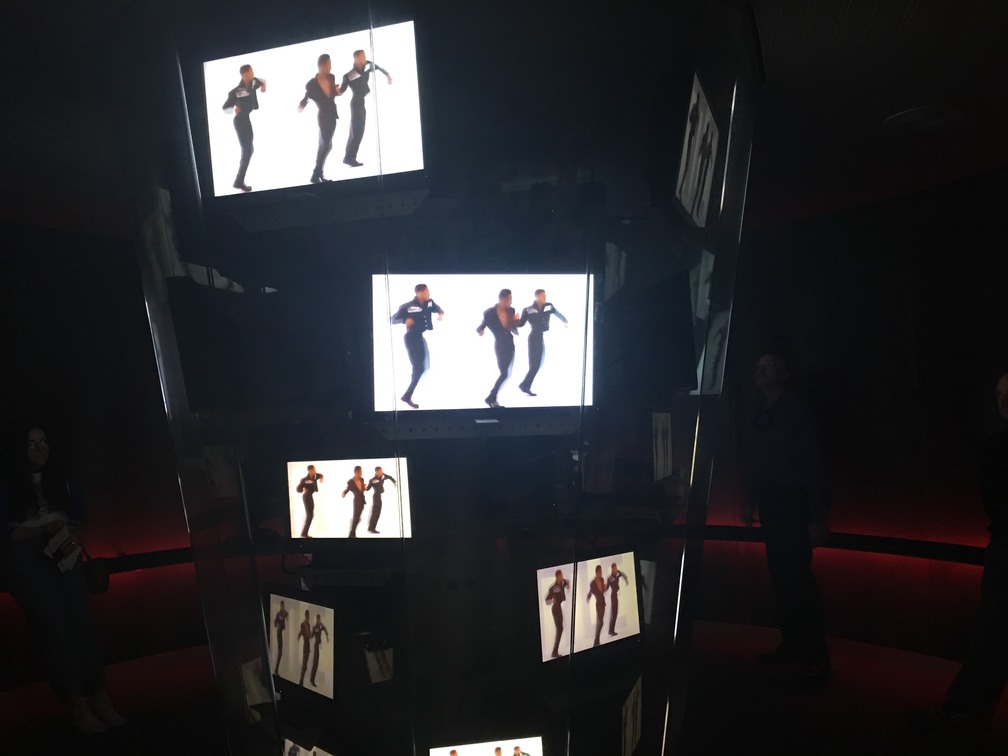
Guitarist Les Paul grew up listening to the radio, and then performing on
radio, and then performing on television. But on August 1, 1981, Music
Television (MTV) was born. It played music videos 24/7 back in the day, and
the first video played was Video Killed the Radio Star by the Buggles. This
exhibit is entitled, Video Killed the Radio Star.
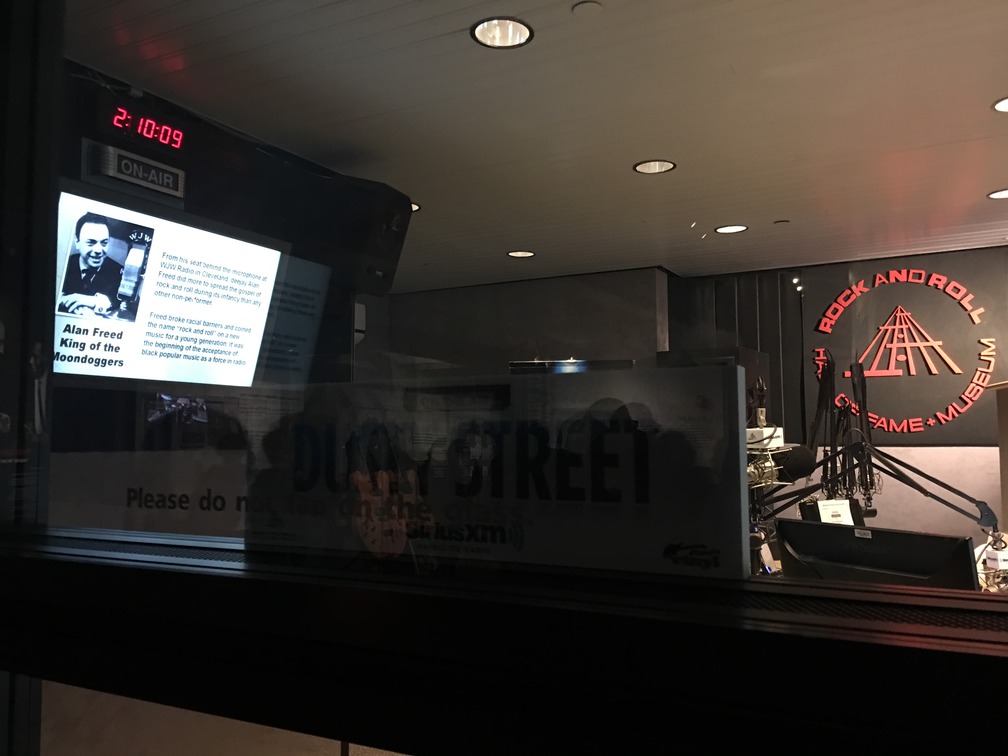
Alan Freed (1921-1965, Pennsylvania) was an early promoter of a new style of
music called rock n roll. Alan Freed was a disc jockey based in Cleveland,
Ohio, who would play rhythm n blues on WJW radio. In 1958, a pay-for-play
scandal called the “payola” scandal signaled the end of Freed’s career, and
he died in Los Angeles seven years later. Nevertheless, he was inducted into
the Rock Hall in 1986 and received a star on the Hollywood Walk of Fame in
1991.

This is the Rock Hall’s reason for being . . . the Hall of Fame inductees
are honored here. The Inductees’ area is on the third floor next to the Cafe
. . . so get some lunch and then go on inside. There is a looping video
presentation and then there is the Wall of Inductees featuring the rock
stars’ signatures in etched in glass, all backlit and blacklit.
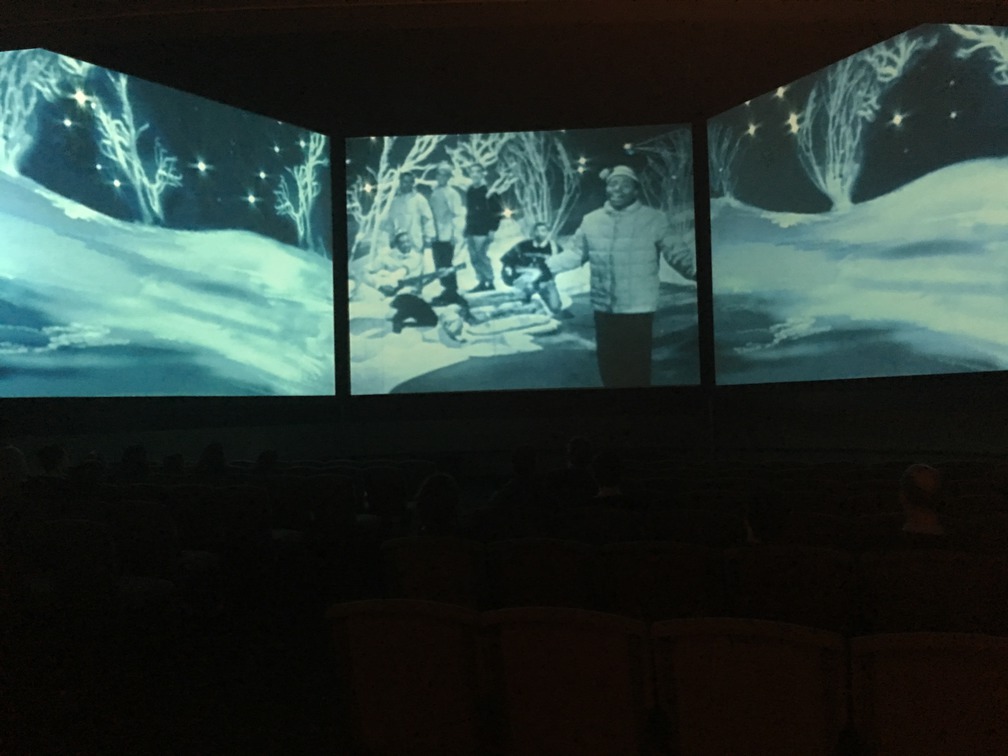
This is an image of the video presentation in the Rock Hall Inductees
exhibit. With everything going on in the Rock Hall, a two-day ticket would
probably enable a visitor to stop and spend more time to educate him or
herself with all of the history and sociology here.
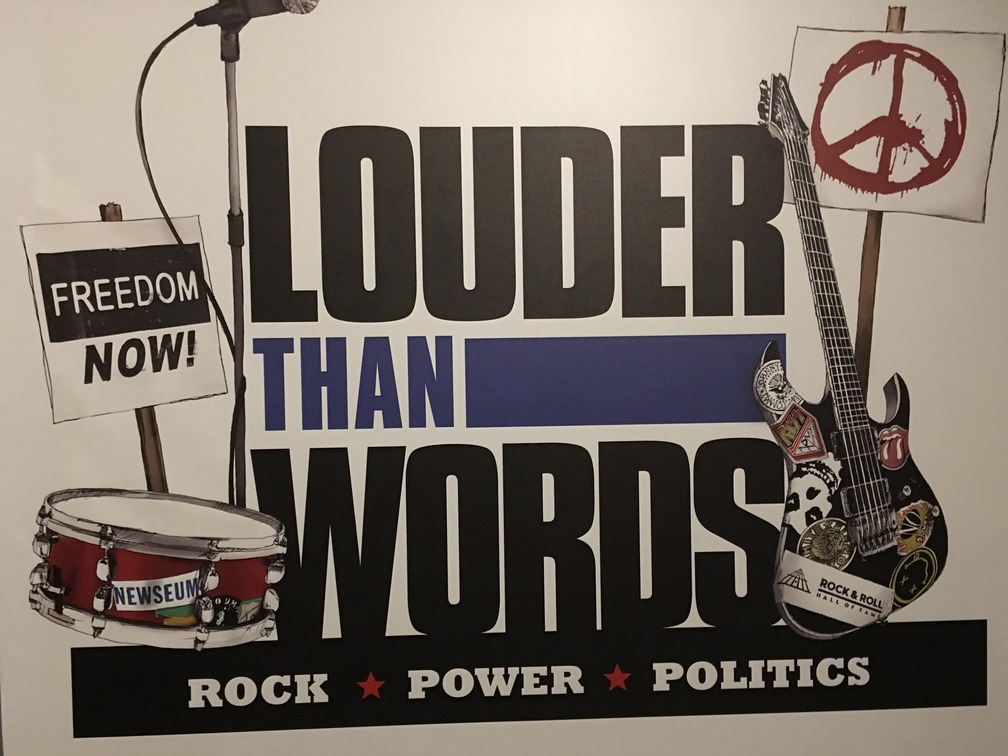
Rock n roll and social change have gone hand in glove for years . . . and
the Rock Hall’s most powerful exhibit “Louder Than Words” explains how it's
done.
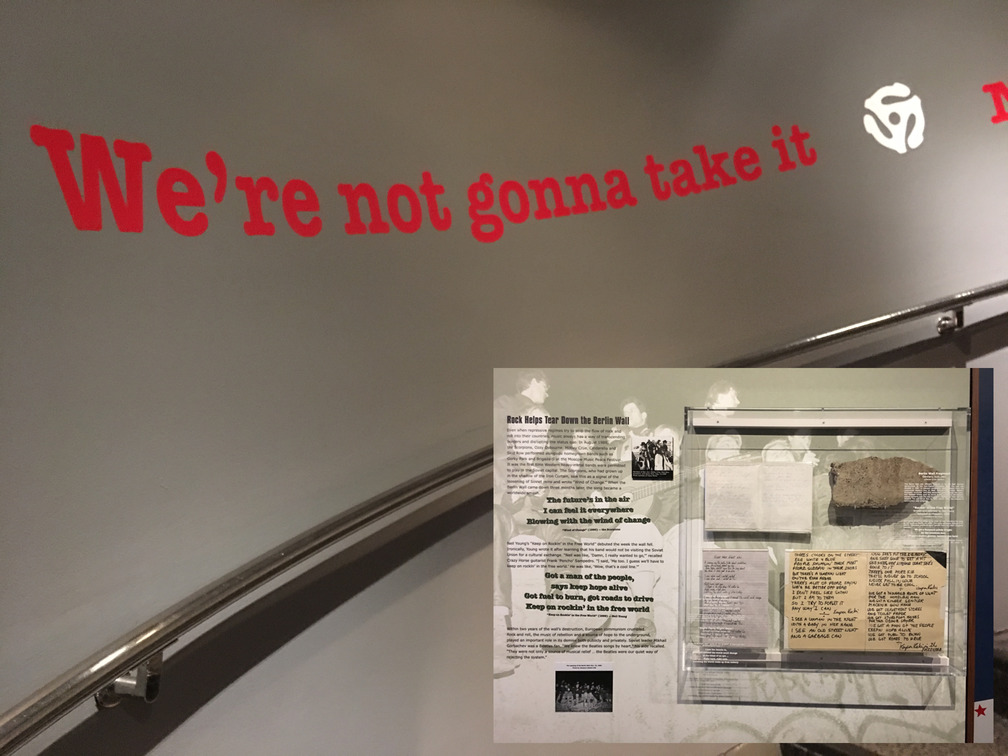
This is so typical of the Rock Hall . . . even the stairwell has something
to say. Twisted Sister, the group who turned those words into a hard-rock
anthem, makes a major appearance here as part of the PMRC hearings in 1985.
Also atop these stairs is a chunk of the Berlin Wall, brought to you by
people who apparently weren’t going to take it anymore, either.
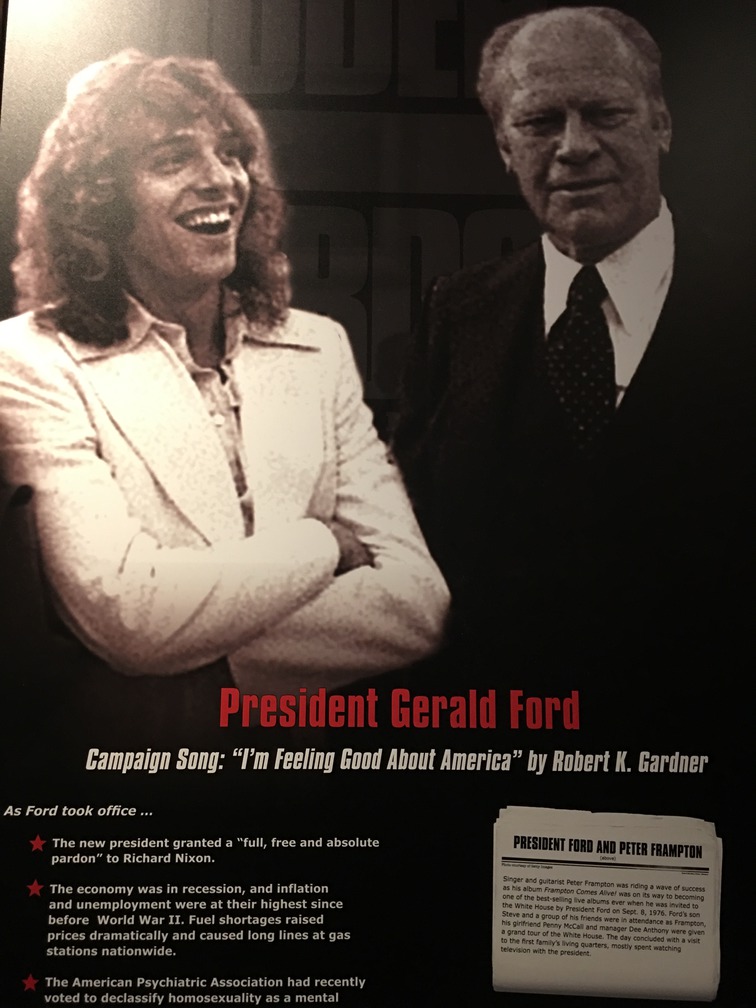
I never imagined I’d see former U.S. President Gerald Ford at the Rock Hall,
but here he is. Peter Frampton, a British singer who lived in Cincinnati for
a time, visited the White House on September 8th, 1976, to celebrate the
success of his new album, Frampton Comes Alive.
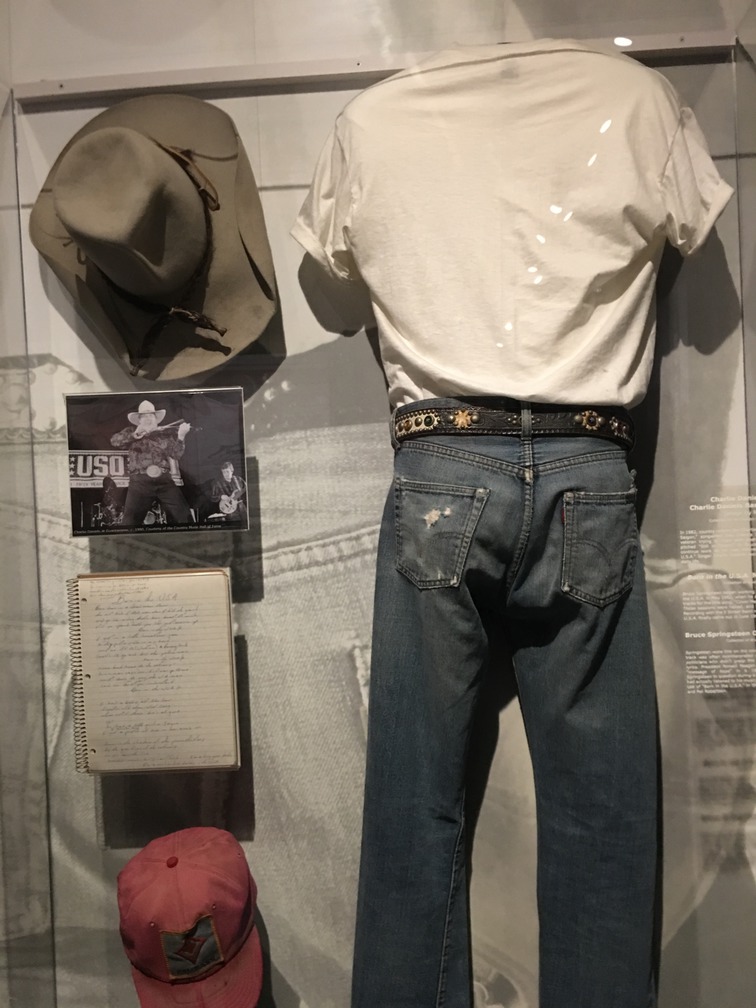
The exhibits at the Rock Hall show history as it happened, through the
guitars, notebooks, stage costumes, and other artifacts on display. Singer
Charlie Daniels (famous for his song, The Devil Went Down to Georgia) has
his hat (c. 1980, top left) on display here, which is from the collection of
the Country Music Hall of Fame. Bruce Springsteen has his red ball cap plus
his jeans and t-shirt that he wore on the cover of his album, Born in the
U.S.A., June 1984, from Columbia Records.
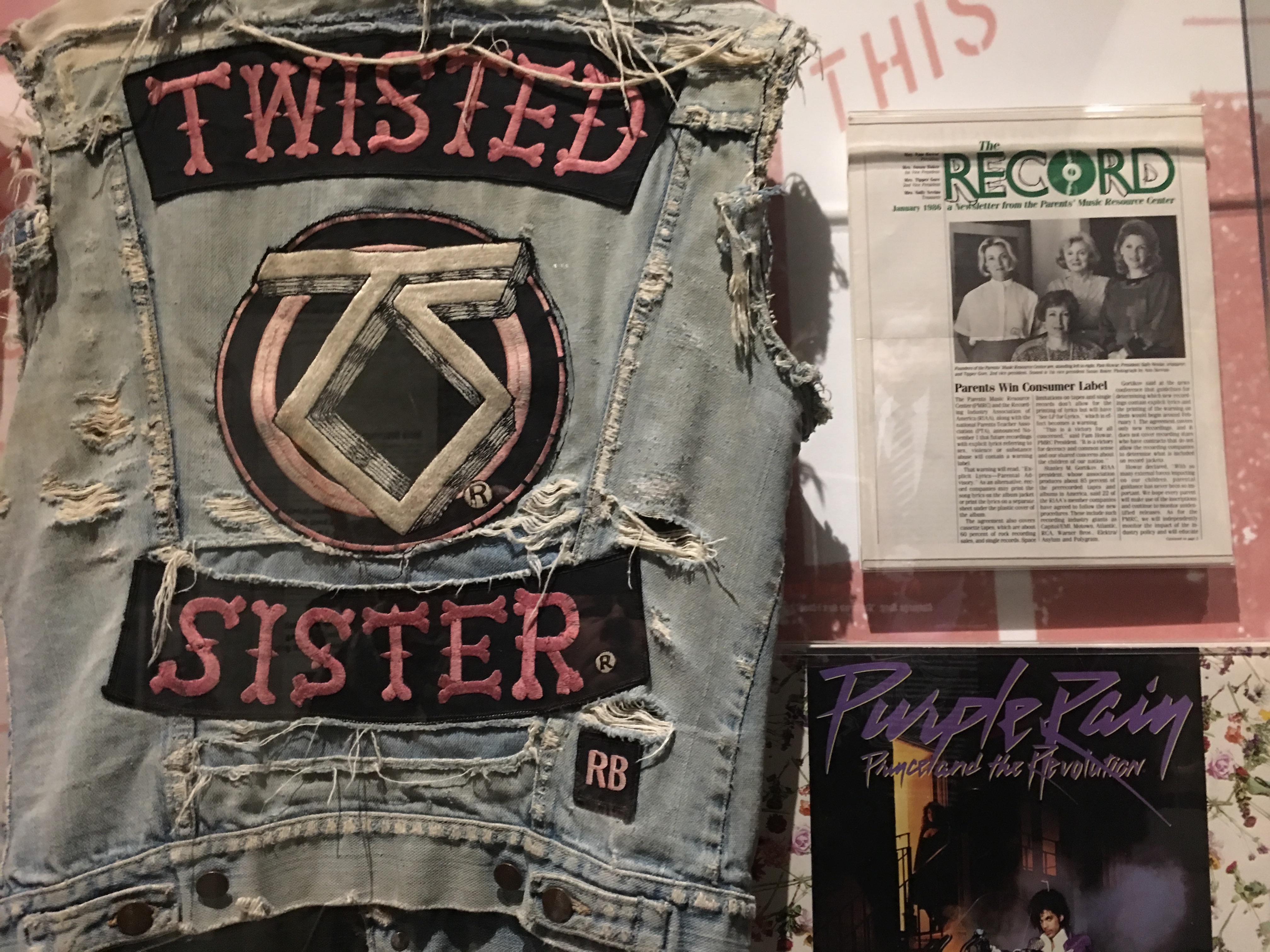
Rock n roll and the political establishment collided head-on at the Parents
Music Resource Center hearings in 1985 in Washington DC, led by Tipper Gore,
who was a rock n roll drummer herself. The former Second Lady of the United
States led an effort to have rock albums labeled for their content similar
to motion pictures. The music industry called it censorship, but Gore’s
labeling efforts prevailed. Ms. Gore stated at the time that she was not
about censorship but about “consumer information in the marketplace."
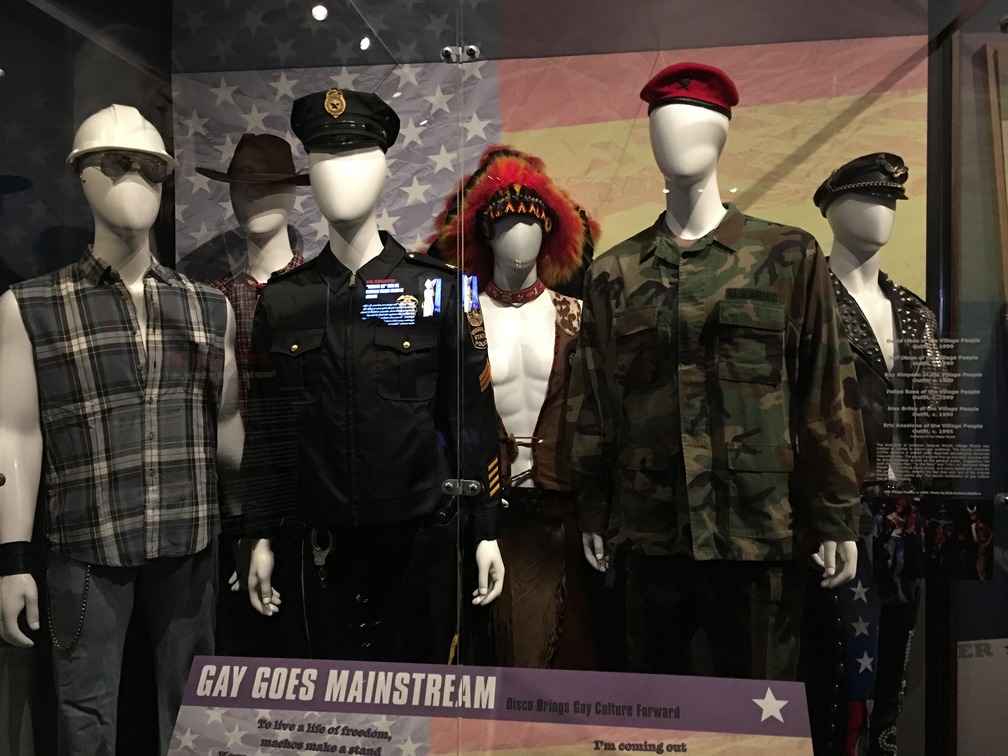
The Village People got their start in Greenwich Village in New York City in
1977. The line-up of guys in the group has changed over the years but the
message is still the same: diversity and inclusivity and gay rights. The
Village People peaked in popularity 1979, but are still performing. The
costumes depicted here are from the 1990's.
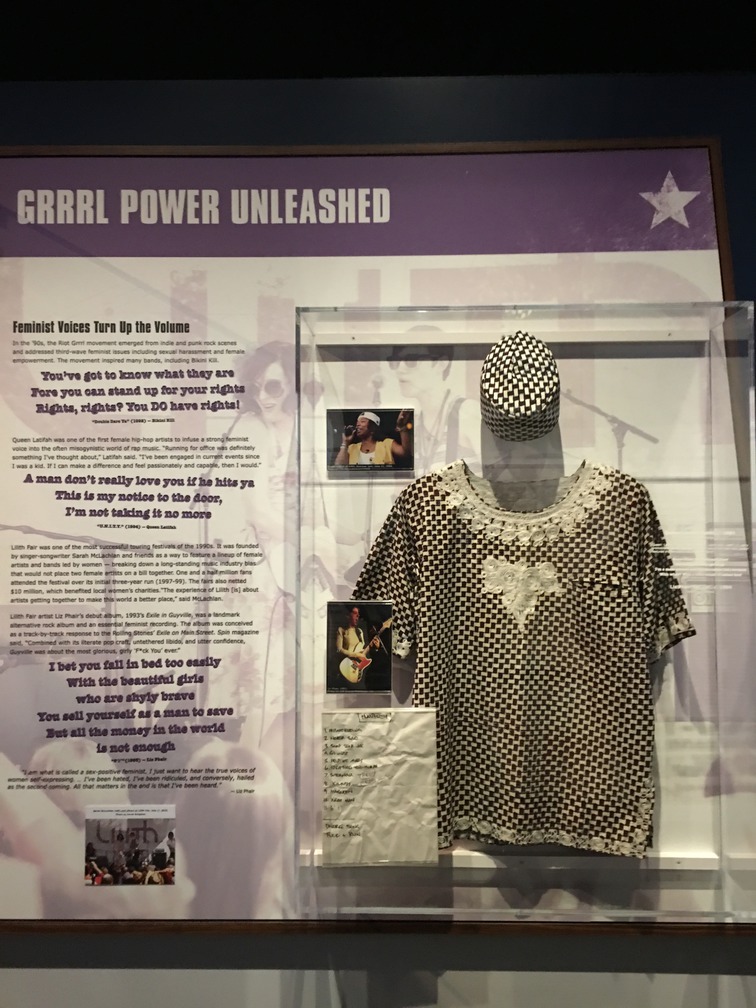
The woman known as Queen Latifah first rallied her feminist Grrrl Power in
1989 with her hit single Ladies First from Tommy Boy Records. The actress,
songwriter, rapper, tv producer, and self-described momma’s girl is also
known as Dana Owen from New Jersey. (Latifah is an Arabic word meaning
delicate and kind.) Fun fact: she is called a contralto voice in the music
world.
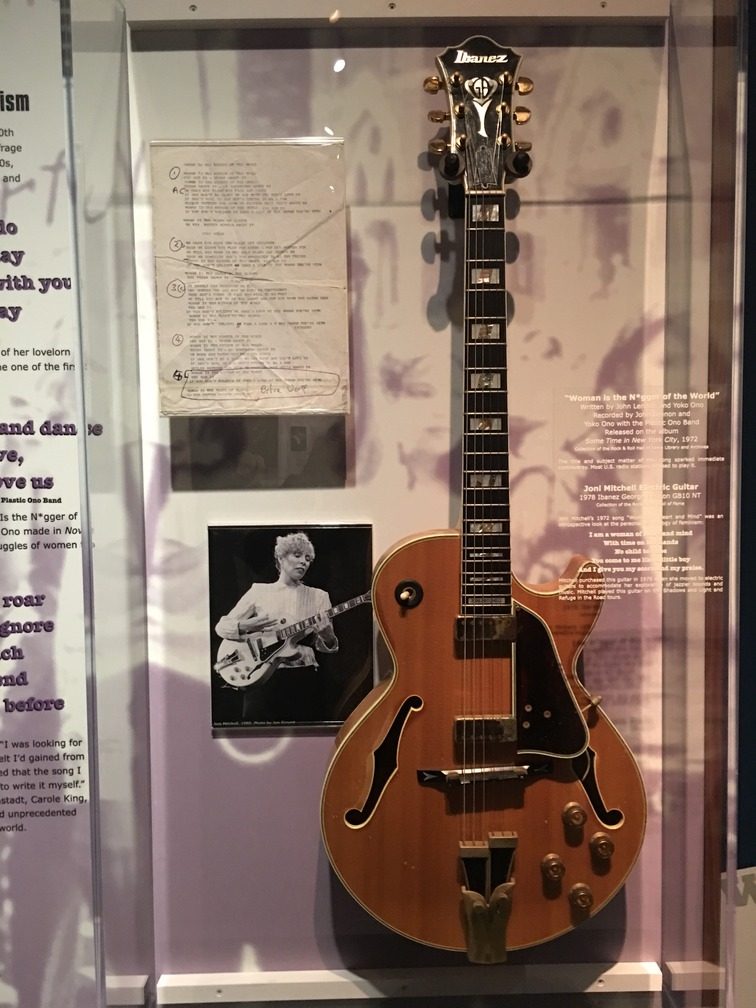
Helen Reddy’s song I Am Woman Hear Me Roar is the anthem of Second Wave
Feminism. Another song popular during that time was Canadian
singer-songwriter Joni Mitchell’s Woman of Heart and Mind (1972). Joni
Mitchell’s guitar, shown here, is a 1978 Ibanez George Benson GB10 NT.
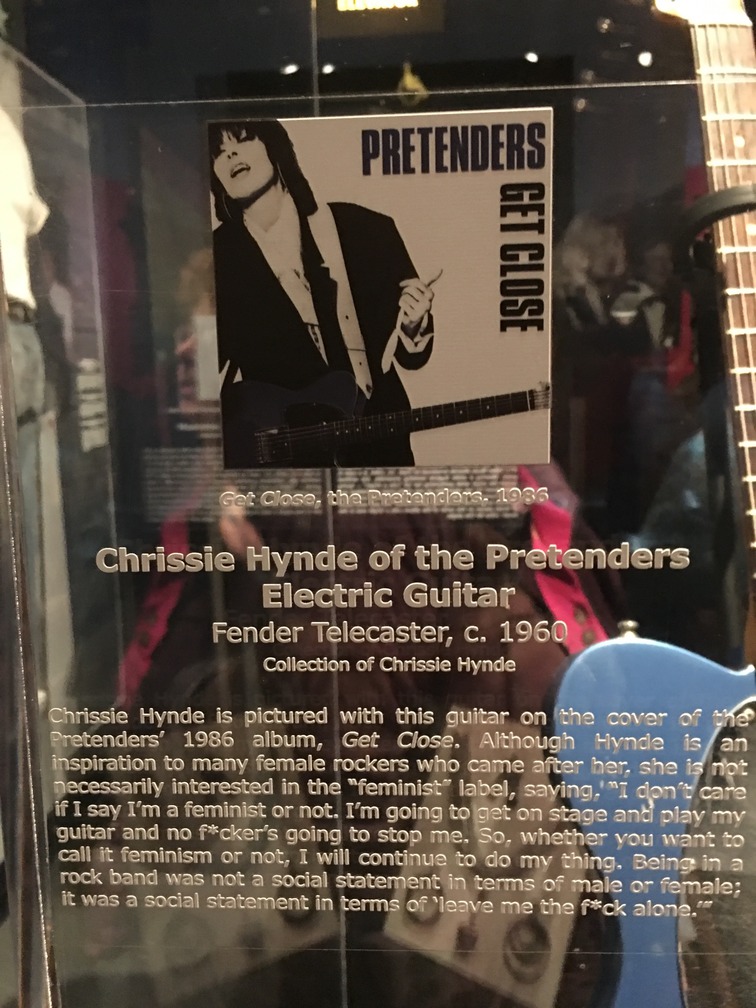
Chrissie Hynde—of the group the Pretenders—is not going to call herself a
feminist. No labels are necessary, she says, because she is going to do what she
is going to do. This Akron, Ohio, native has lent her 1960 Fender Telecaster
as seen on her 1986 album Get Close to the Rock Hall.
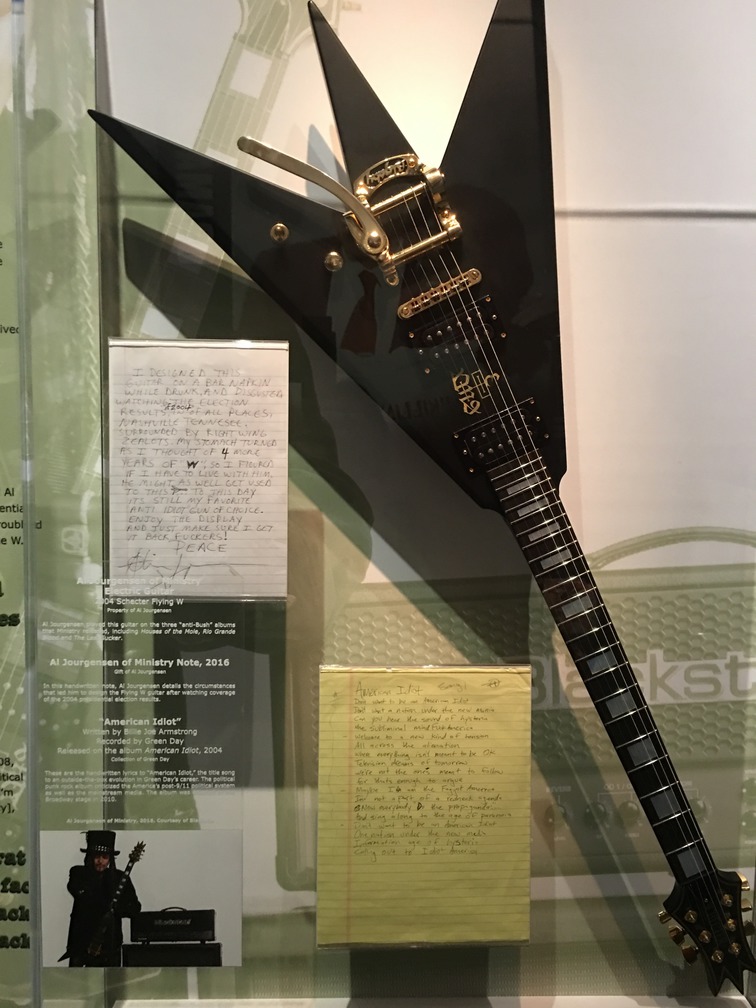
Another awesome axe on display in the Louder Than Words exhibit is the 2004
Schecter Flying W guitar, designed by Al Jourgensen of Ministry. Jourgensen
created it to protest the re-election of George W. Bush in 2004. The note
says it all, as do the lyrics for American Idiot.
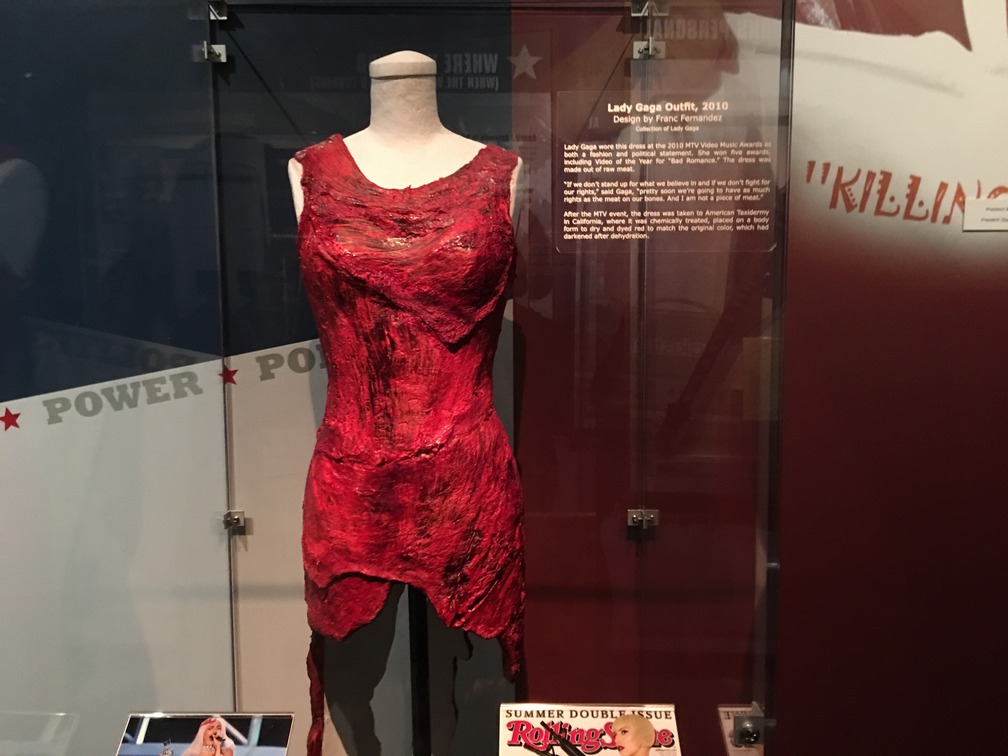
Lady Gaga’s meat dress has this text: Lady Gaga wore this dress at the 2010
MTV Video Music Awards as both a fashion and political statement. . . . The
dress was made out of raw meat. “If we don’t stand up for what we believe in
and if we don’t fight for our rights,” said Gaga, “pretty soon we’re going
to have as much rights as the meat on our bones. And I am not a piece of
meat.” After the MTV event, the dress was taken to American Taxidermy in
California, where it was chemically treated, placed on a body form to dry
and dyed red to match the original color, which had darkened after
dehydration.
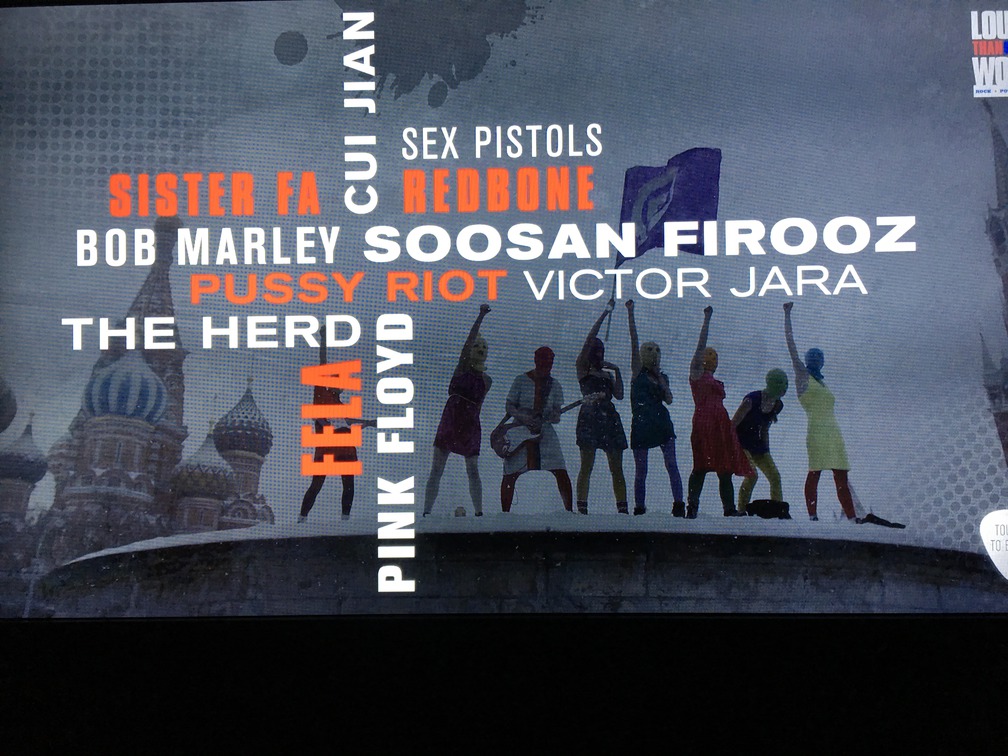
Where is the Rock Hall headed now? One outspoken punk rock band, from
Moscow, Russia, is Pussy Riot, shown here protesting on January 20, 2012, in
Red Square. The women, who said they were inspired by large anti-Putin
rallies the month before, lit smoke bombs and were arrested and fined. Two
of them later served jail time for a similar protest in February 2012 inside
the Orthodox Cathedral of Christ the Savior. Judging by this exhibit, the
Rock Hall will never stand still, as it keeps the old and is constantly
searching for the newest voices at the crossroads of social change and
music, where ever they may be.